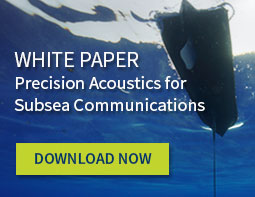The Next Generation Wave Glider
Liquid Robotics — September 7, 2017
Today we announced a new version of the Wave Glider. Here I’ll cover what’s new with this release, and what it means for our customers’ missions.
First, a bit of context. Since the Wave Glider SV3 was announced in 2013, we’ve completed hundreds of customer missions. The ocean is an inhospitable and unpredictable environment, and we’ve learned a lot over the years. With this new version, we’ve incorporated a number of improvements across the vehicle based on those learnings and feedback from customers.
So, what does this mean for our customers’ missions? Here are a few examples:
- Improved performance and survivability in high sea states: The design improvements we’ve made in sub and umbilical improve operational performance in high sea states, helping customers that are looking to operate in harsher environments. (See video below.)
- Better high-latitude navigation: The improved navigational capabilities with the new magnetometer in the sub extends the vehicle’s operations to higher latitudes.
- Improved operational performance and range: With increased power collection through the solar panels, and the ability to accommodate additional auxiliary power units, customers can run longer duration missions.
- Support for heavier payloads: Design improvements allow customer to install heavier payloads (or sensors).
- Simplified maintenance of vehicles in the field: For all of our customers, the new copper anti-biofouling coating will be extremely helpful, enabling vehicles to run longer missions and significantly reducing the amount of time required for cleaning and maintenance on the vehicle.
Now, a bit more detail on what’s new. There are three major physical components of a Wave Glider: the float at the surface, the sub underwater, and the umbilical connecting the two. Let’s walk through what’s new from top to bottom.
Float
We’ve implemented some changes in our float design that increase capacity in several areas. We have increased the payload weight capacity by 30%, and can now accommodate payloads up to 130 pounds, up from 100 pounds with the previous version. These changes also allow for 40% more battery storage capacity. It’s important to note that these changes have not changed the overall dimension of the float (length and width). Rather our design change allowed us to increase buoyancy and improve space in the vehicle. These updates also provided us with a chance to put on new, more efficient solar panels that can offer 15% greater power collection.
Another important change that applies to both the float and the sub is a new copper coating. When a vehicle is out in the ocean for a long time it is susceptible to biofouling—marine organisms attaching themselves to the vehicle. This new coating reduces biofouling, making cleaning and maintenance of the vehicle significantly easier.
Umbilical & Sub
The umbilical and sub which sit below the surface of the water are key elements of our vehicle design. They enable vehicle propulsion, persistence, and the capability to operate in a wide range of ocean conditions (including high sea states). We’ve incorporated changes that increases the strength and resilience in areas that are impacted by the harsh conditions of high sea states. For example, we strengthened the sub body and wings for resilience and performance. We also put in a new magnetometer (compass) in a new location that further reduces magnetic distortion and improves vehicle navigation at high latitudes.
This evolution of the Wave Glider was a true company-wide effort, from our Mission Operations team who work with customers to run missions and get firsthand feedback on how the Wave Gliders are performing, to our Product Management, Engineering, and Manufacturing teams.
Here’s to the next million miles.
Onboard video footage of the Wave Glider operating in a high sea state.
